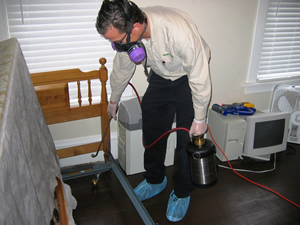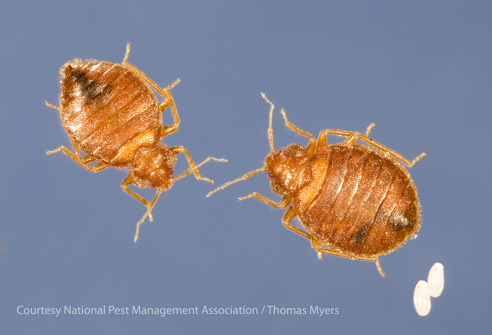Expert Pest Control Arlington VA: Comprehensive Solutions for Your Property
Expert Pest Control Arlington VA: Comprehensive Solutions for Your Property
Blog Article
Obtain Enlightened Regarding the Sorts Of Parasite Control Techniques and Their Advantages for Homeowners
Comprehending the various bug control methods readily available to homeowners is vital for reliable pest management. From chemical and biological methods to mechanical and social methods, each method presents distinct advantages that can considerably affect both wellness and ecological safety. Property owners that are educated can make strategic choices that not only address insect problems however additionally enhance the overall high quality of their living atmosphere. As we check out these methods additionally, it comes to be clear that the decision-making process involves greater than just immediate results; it touches on lasting sustainability and health. What variables should affect these crucial choices?
Chemical Bug Control Techniques
Chemical insect control techniques are an essential part of integrated pest monitoring methods for home owners looking for effective remedies to pest invasions. These methods include the application of chemical compounds designed to remove or discourage pests that threaten personal effects, health, and comfort. Typical chemicals used consist of insecticides, fungicides, rodenticides, and herbicides, each tailored to target certain pests.
The key advantage of chemical bug control is its rapid efficiency; several formulations give immediate outcomes, lowering pest populations dramatically quickly. Furthermore, advances in chemical formulas have actually led to products that are a lot more eco-friendly and have reduced poisoning degrees for non-target organisms when applied appropriately.

Organic Insect Control Techniques
Natural pest control approaches have gained prominence as homeowners look for much safer and much more sustainable choices to standard chemical strategies. Organic bug control methods use natural killers, bloodsuckers, or pathogens to manage bug populations properly. This method is not just ecologically friendly however also lessens the danger of injury to non-target types, consisting of beneficial pests and wild animals.
One of the most usual biological control approaches involves presenting natural killers right into the atmosphere. For instance, ladybugs can be used to manage aphid populations, while nematodes target soil-dwelling bugs like grubs. Furthermore, parasitoids-- microorganisms that survive on or within a host-- can be employed to regulate particular insect varieties by laying eggs inside them, ultimately resulting in their death.
Another strategy is the use of biopesticides, which are originated from natural materials such as germs, plants, or minerals (bed bug exterminator). These items can properly target insects while posing very little risk to animals and people. On the whole, organic pest control methods supply house owners with an efficient ways of pest management that straightens with environmental principles, promoting a healthier living atmosphere while decreasing reliance on synthetic chemicals
Mechanical Bug Control Strategies
Mechanical bug control approaches include a selection of methods that literally protect against or eliminate insects without the use of chemicals. These techniques are particularly beneficial for home owners seeking eco-friendly alternatives while ensuring the security of their space.
One usual approach is the usage of barriers, such as catches, screens, and internet, which protect against bugs from going into homes or specific locations. For circumstances, installing home window screens can efficiently keep bugs out, while utilizing physical barriers around yards can discourage bigger bugs like deer or bunnies. Additionally, mechanical catches made for rats can record and get rid of these parasites without the demand for harmful compounds.
Another effective method includes using vacuum cleaners and brooms to remove pests directly from surface areas. Regular cleansing and maintenance can considerably decrease parasite populations by removing food sources and concealing places. Using tools like ultrasonic bug repellents can hinder various parasites with sound waves that read here are unpleasant to them but faint to human beings.
Cultural Insect Control Practices
Social parasite control practices focus on modifying the setting and administration techniques to develop conditions that are much less helpful to pest problems. These methods are basic in preserving a well balanced ecological community and decreasing the dependence on chemical interventions. By modifying agricultural practices, house owners can properly hinder pests while promoting plant health and wellness.
One common method consists of plant rotation, which interferes with the life process of pests by changing the sorts of plants expanded in a particular location (bed bug exterminator). This not just minimizes pest populaces yet likewise boosts soil health and wellness. In addition, intercropping-- growing diverse plants in distance-- can puzzle bugs and minimize their ability to locate their favored host plants
Water monitoring is another vital aspect of cultural practices. Appropriate watering techniques can prevent standing water, which works as a reproduction ground for mosquitoes and other bugs. Moreover, preserving tidiness in and around the home, such as frequently getting rid of particles and food waste, can dramatically lower bug destination.
Including these cultural techniques right into a detailed parasite management technique allows property owners to create an atmosphere that naturally deters pests, thus enhancing the performance of other control approaches while promoting sustainable horticulture and landscape design.

Integrated Pest Administration Approaches
Integrated Parasite Management (IPM) represents a holistic technique that integrates numerous techniques to properly manage insect populations while lessening environmental influence. This approach incorporates biological, social, physical, and chemical practices to attain lasting insect control. By analyzing pest populaces and their natural enemies, IPM emphasizes monitoring and recognizing insects prior to executing control actions.
Among the core principles of IPM is the use of limits, which Visit Website establish the level of bug task that calls for treatment. This guarantees that treatments are used just when essential, reducing the reliance on chemical pesticides. Organic control techniques, such as presenting natural predators or parasites, work in conjunction with social techniques like crop rotation and habitat manipulation to disrupt pest life cycles.
Additionally, IPM motivates the use of least-toxic chemical options when treatment is needed, prioritizing items that present very little risk to non-target microorganisms and the atmosphere. For homeowners, adopting IPM comes close to not just enhances the efficacy fleas of pest management yet also promotes a healthier living environment, fostering biodiversity and lowering chemical exposure. Ultimately, IPM equips home owners to make informed choices that stabilize insect control with environmental responsibility.
Verdict
In final thought, recognizing the different pest control techniques encourages homeowners to make educated choices concerning pest management. Each strategy-- chemical, biological, mechanical, cultural, and incorporated insect monitoring-- uses distinct advantages that cater to various requirements and preferences.
Recognizing the various parasite control techniques available to house owners is vital for effective bug monitoring.Chemical insect control methods are a vital part of incorporated parasite monitoring methods for property owners seeking reliable remedies to pest problems. On the whole, organic parasite control strategies provide house owners with an efficient ways of parasite management that lines up with eco-friendly principles, advertising a much healthier living environment while minimizing dependence on synthetic chemicals.
Cultural parasite control practices focus on changing the setting and management methods to produce conditions that are less helpful to pest problems.In final thought, understanding the different pest control techniques encourages property owners to make enlightened choices pertaining to pest administration.
Report this page